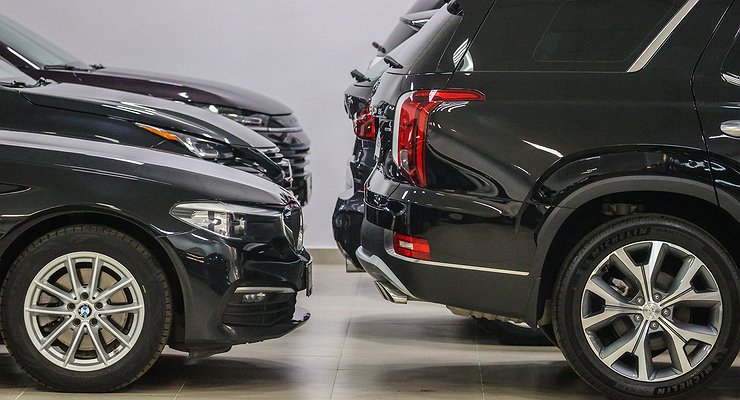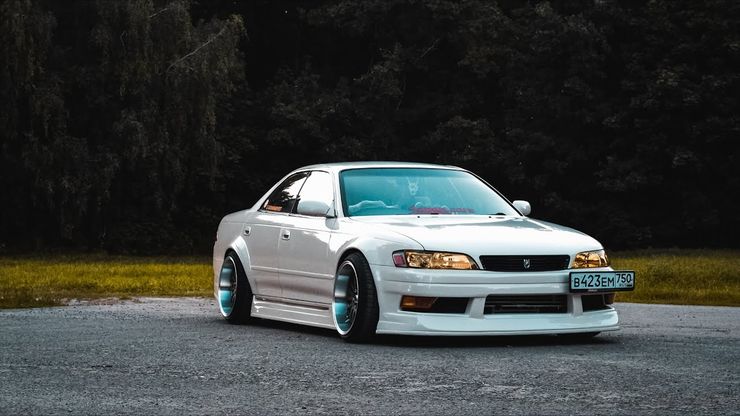Why Russians are abandoning left-hand drive cars en masse
- December 22, 2022
- 0
In 2022, the port of Vladivostok received 66% more used Japanese cars than in 2021. The results have yet to be summarized, but the figure is already impressive:
In 2022, the port of Vladivostok received 66% more used Japanese cars than in 2021. The results have yet to be summarized, but the figure is already impressive:

Parallel imports, mass “European imports” and right-hand drive are the three main “trends” of the domestic car market in 2022. The first are new cars, which, of course, are cheaper than at the dealer, but still expensive. The second is the prerogative of only the central zone and the middle class, which is constantly disappearing in Russia. Let’s face it: from Europe it is profitable to bring plus or minus a Mercedes “yeshka” or a Bavarian “five” – there is enough profit to cover the risks, the waiting time for cars and other things.
Anyone struggling to refute – welcome to the market to find out the current cost of transferring currency to Europe, and delivering the same car in the opposite direction. To cover the budget segment – from now on this is everything that is under two million rubles per car, and not a mountain of spare parts with documents – only the “secondary” of the Japanese domestic market remains. Same JDM.
Having faced reality, Russians across the country have revised their attitude to the “steering wheel in the glove box”: adjustment takes a few days, but the number of “buns” is incomparable to anything else. Transformation of the cabin, options, comfort, silence, fuel consumption – it’s all about the automotive industry of the Land of the Rising Sun. But the main thing is a monstrous, a hundred times more than any “European” source. The Japanese are “doing things” so far and have no intention of stopping in their pursuit. Especially if we are talking about the domestic market, from which, in fact, numerous “right-handers” come to us.
Honda minivans, small Toyota and Suzuki kei cars, the new Marks and their compatriots simply filled the streets of Moscow. After all, they are cooler, more convenient, and most importantly, cheaper than any of their competitors. The Japanese yen did such a somersault this year that even without a “bayonet attack” of the ruble against the dollar, it made a highly profitable bid for the “secondary market”. More than 170,000 cars came to Vladivostok, our main used car port on the island, and the legendary Green Corner, the country’s most famous right-hand market, experienced not even a rebirth, but something more.
But the main thing, of course, is the consciousness of the mass consumer. Today, the vast majority of Russian drivers understand that when it comes to a used car in good condition, you need to look at the right-hand drive. There are no problems with spare parts, the car runs for 3-5 years without serious investment and then goes to a new owner with minimal loss of value. In short, welcome to the world of “no runs”, “I have not seen salt”, “auction list”. Welcome back!

Parallel imports, mass “European imports” and right-hand drive are the three main “trends” of the domestic car market in 2022. The first are new cars, which, of course, are cheaper than at the dealer, but still expensive. The second is the prerogative of only the central zone and the middle class, which is constantly disappearing in Russia. Let’s face it: from Europe it is profitable to bring plus or minus a Mercedes “yeshka” or a Bavarian “five” – there is enough profit to cover the risks, the waiting time for cars and other things.
Anyone struggling to refute – welcome to the market to find out the current cost of transferring currency to Europe, and delivering the same car in the opposite direction. To cover the budget segment – from now on this is everything that is under two million rubles per car, and not a mountain of spare parts with documents – only the “secondary” of the Japanese domestic market remains. Same JDM.
Having faced reality, Russians across the country have revised their attitude to the “steering wheel in the glove box”: adaptation takes a few days, but the number of “goodies” is incomparable to anything else. Transformation of the cabin, options, comfort, silence, fuel consumption – it’s all about the automotive industry of the Land of the Rising Sun. But the main thing is a monstrous, a hundred times more than any “European” source. The Japanese are “doing things” so far and have no intention of stopping in their pursuit. Especially if we are talking about the domestic market, from which, in fact, numerous “right-handers” come to us.
Honda minivans, small Toyota and Suzuki kei cars, the new Marks and their compatriots simply filled the streets of Moscow. After all, they are cooler, more convenient, and most importantly, cheaper than any of their competitors. The Japanese yen did such a somersault this year that even without a “bayonet attack” of the ruble against the dollar, it made a highly profitable bid for the “secondary market”. More than 170,000 cars came to Vladivostok, our main used car port on the island, and the legendary Green Corner, the country’s most famous right-hand market, experienced not even a rebirth, but something more.
But the main thing, of course, is the consciousness of the mass consumer. Today, the vast majority of Russian drivers understand that when it comes to a used car in good condition, you need to look at the right-hand drive. There are no problems with spare parts, the car runs for 3-5 years without serious investment and then goes to a new owner with minimal loss of value. In short, welcome to the world of “no runs”, “I have not seen salt”, “auction list”. Welcome back!
Source: Avto Vzglyad
Donald Salinas is an experienced automobile journalist and writer for Div Bracket. He brings his readers the latest news and developments from the world of automobiles, offering a unique and knowledgeable perspective on the latest trends and innovations in the automotive industry.